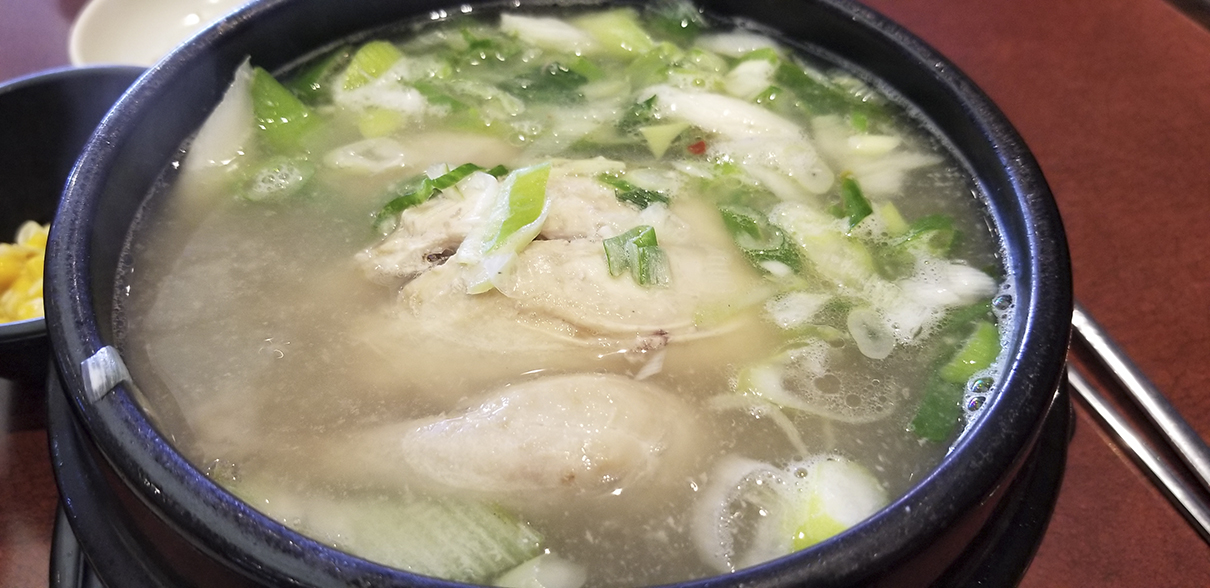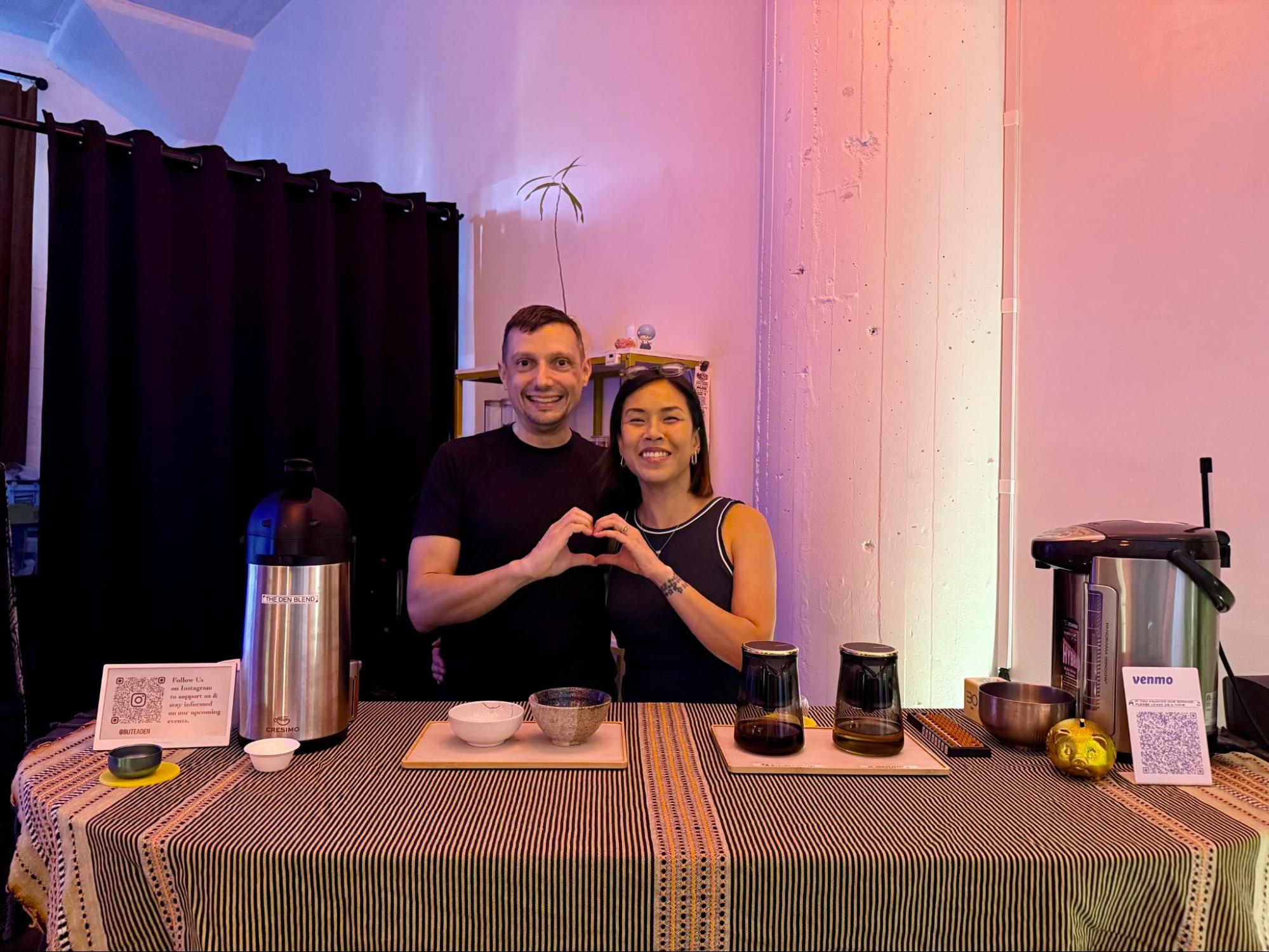[dropcap size=big]G[/dropcap]race Chang, a thirty-something mother of three, inched in traffic through the congested streets of Los Angeles in 90 degree weather from La Crescenta to Koreatown in the belief that slurping up a still boiling bowl of chicken ginseng soup to help them cope with the scorching weather.
She wasn’t alone. She was one of cavalcade of believers on a recent scorching Thursday afternoon waiting for a seat outside Buil Samgyetang, an unassuming eatery on West 3rd Street, across the street from a shoe repair shop in the heart of Koreatown.
Samgyetang is soup made from a young whole chicken stuffed with healthy ingredients such as glutinous rice, red dates, ginseng and garlic. It’s usually served still boiling in an individual pot called a dolsut which helps retain the soup’s heat.
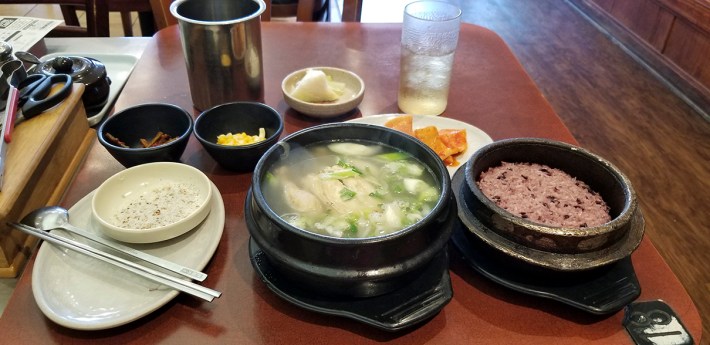
The whole idea is to eat it while it’s hot, to fight fire with fire. I know because I lived in South Korea on and off for about 20 years, and ate samgyetang more times than I can count.
The counter intuitive concept of Yiyeol Chiyeol (literally, govern the heat with heat) is a no-brainer for the people who crowded restaurants serving the soup on Aug. 16, malboknal (the last of the three dog days of summer).
Buil Samgyetang has but one thing on the menu, chicken ginseng soup, for those after the hardcore chicken ginseng soup experience.
Joel Park, owner and operator of Buil Samgyetang, says eating hot chicken soup infused with ginseng will actually cool you off, as it replenishes nutrients, improves circulation and helps balance the body’s internal and external temperatures. He said his mom runs another Buil Samgyetang in his hometown of Busan, a Korean port city located in the southern end of the country.
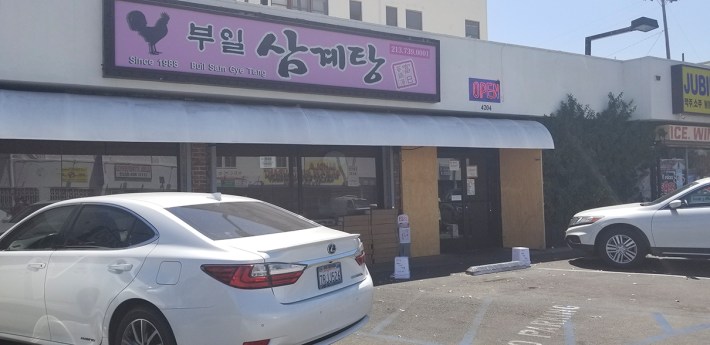
According to the lunar calendar, sambok refers to the “three dog days” of summer, days that are particularly hot and enervating. This year they were July 17 (the first day or jobok), July 27 (the middle day or jungbok) and August 16 (malbok). It’s an ancient idea rooted in Taoism and traditional Korean nutrition, recommending the best way to cope with oppressively hot weather that seems to suck the energy out of us is to wolf down chicken ginseng soup.
“The idea is to fortify the body rather than cooling it directly,” says Koo Se-woong, publisher of Korea Expose, an independent media outlet based in Seoul and specializing in the Korean Peninsula. “So some Koreans seek out hot, nourishing food such as chicken and ginseng soup. Especially as the popularity of dog meat soup — traditionally eaten on hot summer days — wanes, chicken has become the preferred source of nourishment.”
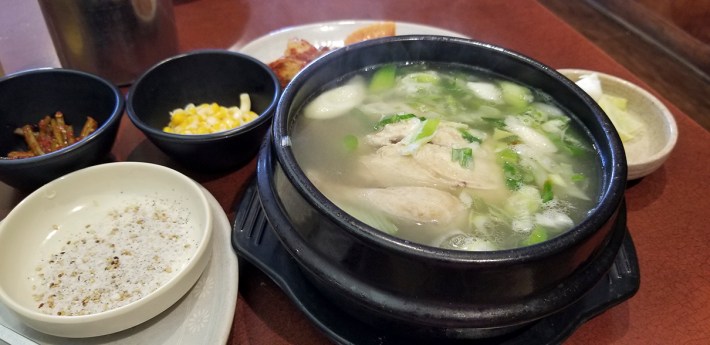
I should note that I couldn’t find any scientific backing for the curative properties of chicken soup, and modern research doesn’t back up any of the claimed health benefits of ginseng. That said, ginseng has been incorporated in traditional Asian remedies since time immemorial. It’s such a key part of the soup’s “curative properties” that it’s often served with ginseng tea or ginseng liquor.
Another restaurant in Koreatown that catered to Thursday’s samboknal crowd was Keungama, and frequented by a much older clientele. Stella Kim, the Keungama’s proprietor had staff put up signs, “This week, Malboknal” around the restaurant as if to announce the special day well in advance. I swear 90 percent of the packed house looked over 70 years of age.
But the line wasn’t as long there, so that’s where I went to get my hot pot of restorative galline goodness. Keungama offered a less specialized and traditional experience than Buil Samgyetang and has many more items on its menu. In fact, Mrs Kim says they specialize in seolleongtang (ox bone soup), not samgyetang.
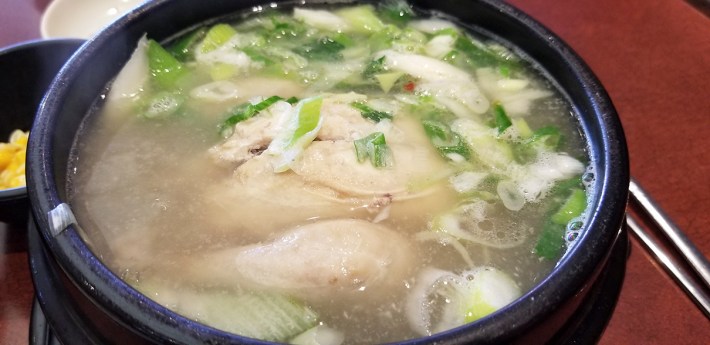
The chicken broth, boiled for hours, tastes clean and refreshing. And the soup remains boiling hot for more than a few minutes after landing on your table. At Keungama, you also get a second dolsut bowl of mixed grain rice (japgokbap).
And one more plus for Keungama is that they serve samgyetang with a shot of ginseng liquor (Buil Samgyetang serves ginseng tea only. In fact, they do not sell alcohol of any kind). You can either drink the liquor or pour it into the soup. It’s said the hard liquor combats the soup’s strong raw chicken smell, but I just drank mine while I ate.
You’ll probably get a side dish of chopped scallions, too. But I had to request mine.
The young chicken has to be deboned before eating. It feels kind of like a study in chicken anatomy as you dislocate the wings, legs, and rib bones and sometimes even the neck of the small whole chicken.
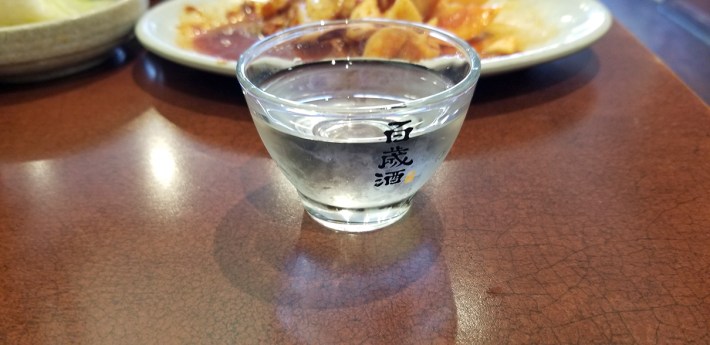
Every restaurant serving samgyetang will have a cylindrical metal bucket like a large pencil holder at every table, for discarded bones. The chicken legs have been crossed to hold in the stuffing to hold in the various tonic ingredients: the ginseng, garlic cloves, and red dates.
According to the lunar calendar, sambok only lasts about a month usually from July to August, usually the hottest time of the year and traditionally calling for foods believed to restore vitality. In South Korea, Samgyetang is one of the most commonly sought dishes during those hot summer months. Seeing long lines outside popular samgyetang restaurants is a common site in Seoul, but you can get a glimmer of that Korean tradition on the streets of Koreatown in L.A.
Even though the “three dog days” of summer have now passed, on hot days on the streets of Koreatown you can probably still spot people seeking out the taste of samgyetang. In L.A., they’ll serve the special soup all year, but it’s on the hottest days when you’re most likely to see Korean moms with their kids at the local chicken ginseng soup house in Koreatown.
“In the olden days, they used chicken in summertime soup, because it was cheaper,” says the mother of three from La Crescenta. “Most people could not afford beef or pork. Chicken was the available meat to make best soup possible.”
RELATED: Restaurant Guide to Koreatown
